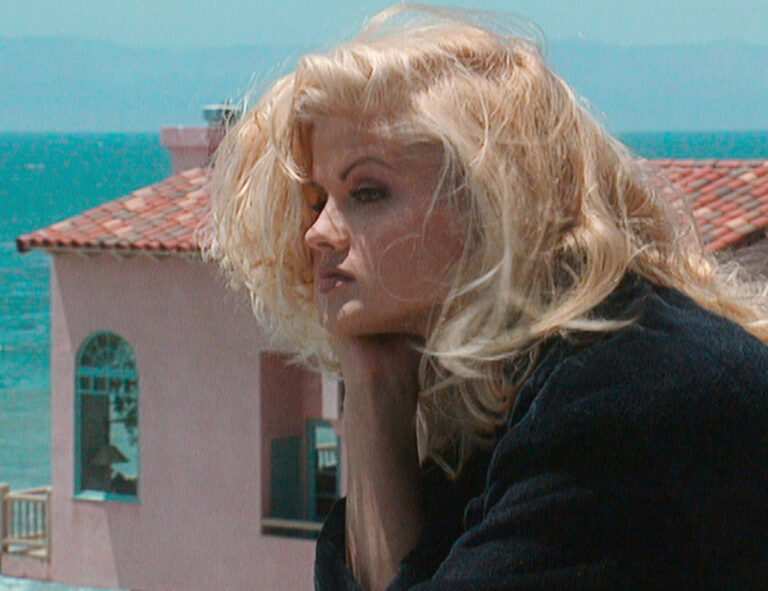
A ‘90s-era phenomenon, Anna Nicole Smith became famous for emulating Marilyn Monroe’s blond bombshell appearance, first on the pages of Playboy and later as a model for Guess jeans. Smith’s kinship with the ghost of Monroe always came across as superficial. They cultivated a similar look and both would rise to stardom from humble beginnings, only for it to end in tragedy. But that’s a simplistic understanding of either woman.
For anyone old enough to remember Smith’s heyday, the Netflix documentary “Anna Nicole Smith: You Don’t Know Me” doesn’t reveal unknown facets of her life so much as lay them out in one place. It’s a deeply sad story, but the title of director Ursula Macfarlane’s film is also ironic. I’m not sure anyone here, from those interviewed to the filmmakers themselves, really knows much about Smith beyond what she presented to the world.
Hollywood and certain corners of the media have a way of chewing people up and spitting them out, and there has been a recent spate of streaming documentaries claiming to right those wrongs, while also exploiting their subjects all over again. Are these projects — about Britney Spears and Pamela Anderson and Brittany Murphy — trying to make sense of history, or make entertainment of it?
Celebrity comes with a cost and Smith certainly experienced her fair share of its downside.
Her modeling career wasn’t the springboard she’d hoped for. Her acting career never amounted to much beyond some bit roles. With plenty of interest in her comings and going, but few other career options — plus her tendency to court the paparazzi, plus her marriage to an elderly billionaire she met during her time as an exotic dancer — she was treated as a punchline.
But who was she behind the persona she created for the media? Even as the documentary attempts a more humane telling of her story, she remains someone who was defined by events in her life, rather than her own sense of the world.
Unlike Pamela Anderson, that other ‘90s-era pinup who also felt the sting of tabloid celebrity and was recently the subject of a Netflix documentary, Smith is not here to tell her own story or reflect on anything in hindsight. So we’re left to rely on old interviews, in which she is vague or evasive about the details of her childhood in small-town Texas. Was she raised in an abusive home, as she suggests? Or was that something she invented to garner interest and sympathy, as alleged by her late mother? The documentary simply presents both possibilities and leaves it at that.
I didn’t pay much attention to Smith at the height of her fame, nor the depths. The media coverage seemed empty and sordid and exploitative. There was nothing there. It was a bit dull? But you could say that about any number of present-day boldface names (including the Kardashians) and influencers who have followed in her wake. I think the difference with Smith is that as adept as she was at creating an image, she wasn’t business savvy. She didn’t understand that her initial flush of fame was a small window in which she needed to surround herself with the right kind of people. Namely, those who understood how to leverage her talents and specific appeal, rather than treat her as a disposable commodity. She was sweet and bubbly. There’s always a market for that.
It’s not that she tried to make it on her own. Quite the opposite. She just had bad instincts about who she surrounded herself with. “She kept looking for somebody else to save her,” is how one of her lawyers puts it. Too often, she infantilized herself, sometimes literally; meeting her estranged father for the first time, she shows up wearing pigtails.
Her marriage to oil baron J. Howard Marshall followed that pattern as well. He was 89 at the time; she was 26. If their relationship was transactional, it doesn’t come across as cynical in the footage we see of them together. There’s a tenderness they shared. How often were they living under the same roof? We hear plaintive voicemail messages he leaves for her (I wish the film explained how and from whom these messages were obtained) and it suggests the two were perhaps not living together at all. But they both got something beneficial out of the arrangement. He seemed to adore her and she seemed to adore him right back, along with the money he funneled her way. She was ultimately denied any portion of his fortune after his death, and the inheritance became the subject of a protracted legal fight (which continued even after Smith’s death in 2007) and that became yet more chum for the tabloids.
Things fell apart for Smith due to a number of factors, including a pill addiction and the death of her 20-year-old son Daniel just days after she gave birth to her second child, a girl named Dannielynn.
Watching the documentary, it’s impossible not to think of Dannielynn, who is now 16. It appears she has no involvement with the film. She was just a few months old when Smith died, and she has been raised in relative obscurity by her father, Larry Birkhead.
But the privacy of her childhood seems to be coming to an end. They both attended the Kentucky Derby earlier this month, a social event where the whole point is to be seen and photographed. Birkhead also gave interviews to People magazine and E! about his daughter and you have to wonder: To what end?
If anyone saw firsthand how fickle and damaging celebrity can be, it’s Birkhead. Why would he want anything like that for his daughter?
___
© 2023 Chicago Tribune
Distributed by Tribune Content Agency, LLC.
0 comments :
Post a Comment